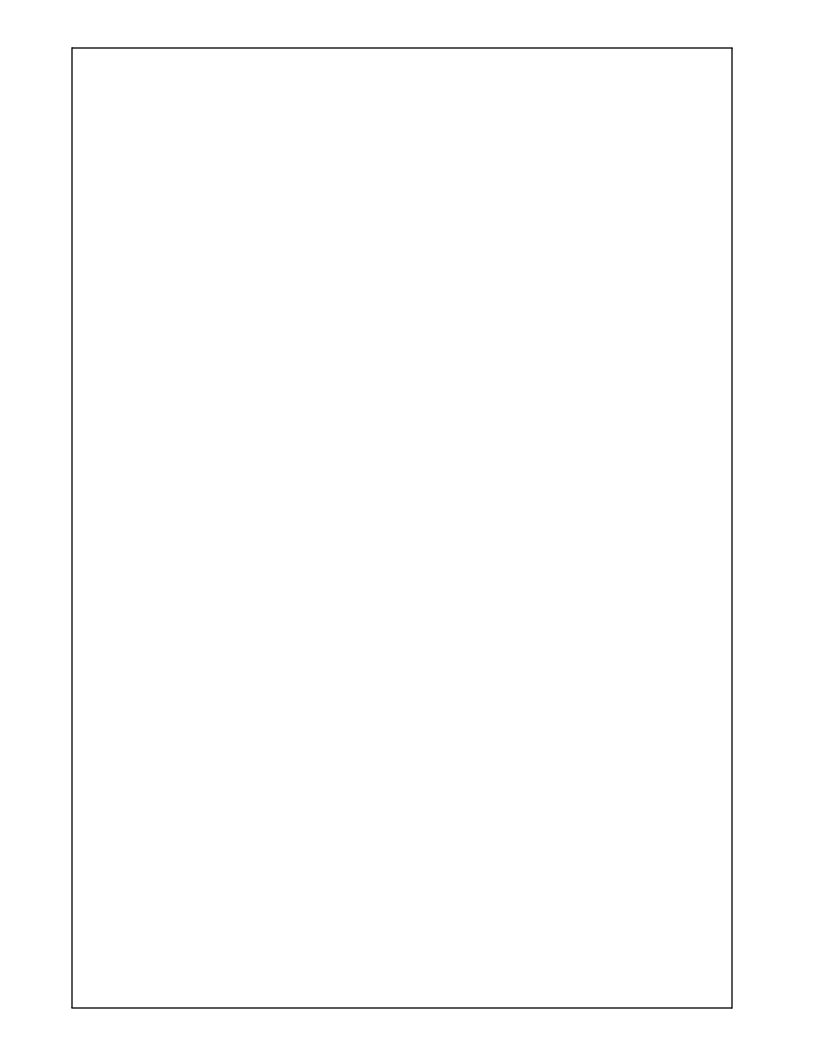- 您現(xiàn)在的位置:買賣IC網(wǎng) > PDF目錄358620 > 30046-23 (NATIONAL SEMICONDUCTOR CORP) Low Power Integrated x86-Compatible 32-Bit Geode GXLV Processor(低功耗集成兼容X86的32位 Geode GXLV技術(shù)處理器) PDF資料下載
參數(shù)資料
| 型號: | 30046-23 |
| 廠商: | NATIONAL SEMICONDUCTOR CORP |
| 元件分類: | 微控制器/微處理器 |
| 英文描述: | Low Power Integrated x86-Compatible 32-Bit Geode GXLV Processor(低功耗集成兼容X86的32位 Geode GXLV技術(shù)處理器) |
| 中文描述: | 32-BIT, 200 MHz, MICROPROCESSOR, CPGA320 |
| 封裝: | SPGA-320 |
| 文件頁數(shù): | 136/247頁 |
| 文件大?。?/td> | 4379K |
| 代理商: | 30046-23 |
第1頁第2頁第3頁第4頁第5頁第6頁第7頁第8頁第9頁第10頁第11頁第12頁第13頁第14頁第15頁第16頁第17頁第18頁第19頁第20頁第21頁第22頁第23頁第24頁第25頁第26頁第27頁第28頁第29頁第30頁第31頁第32頁第33頁第34頁第35頁第36頁第37頁第38頁第39頁第40頁第41頁第42頁第43頁第44頁第45頁第46頁第47頁第48頁第49頁第50頁第51頁第52頁第53頁第54頁第55頁第56頁第57頁第58頁第59頁第60頁第61頁第62頁第63頁第64頁第65頁第66頁第67頁第68頁第69頁第70頁第71頁第72頁第73頁第74頁第75頁第76頁第77頁第78頁第79頁第80頁第81頁第82頁第83頁第84頁第85頁第86頁第87頁第88頁第89頁第90頁第91頁第92頁第93頁第94頁第95頁第96頁第97頁第98頁第99頁第100頁第101頁第102頁第103頁第104頁第105頁第106頁第107頁第108頁第109頁第110頁第111頁第112頁第113頁第114頁第115頁第116頁第117頁第118頁第119頁第120頁第121頁第122頁第123頁第124頁第125頁第126頁第127頁第128頁第129頁第130頁第131頁第132頁第133頁第134頁第135頁當前第136頁第137頁第138頁第139頁第140頁第141頁第142頁第143頁第144頁第145頁第146頁第147頁第148頁第149頁第150頁第151頁第152頁第153頁第154頁第155頁第156頁第157頁第158頁第159頁第160頁第161頁第162頁第163頁第164頁第165頁第166頁第167頁第168頁第169頁第170頁第171頁第172頁第173頁第174頁第175頁第176頁第177頁第178頁第179頁第180頁第181頁第182頁第183頁第184頁第185頁第186頁第187頁第188頁第189頁第190頁第191頁第192頁第193頁第194頁第195頁第196頁第197頁第198頁第199頁第200頁第201頁第202頁第203頁第204頁第205頁第206頁第207頁第208頁第209頁第210頁第211頁第212頁第213頁第214頁第215頁第216頁第217頁第218頁第219頁第220頁第221頁第222頁第223頁第224頁第225頁第226頁第227頁第228頁第229頁第230頁第231頁第232頁第233頁第234頁第235頁第236頁第237頁第238頁第239頁第240頁第241頁第242頁第243頁第244頁第245頁第246頁第247頁

www.national.com
136
Revision 1.2
Integrated Functions (
Continued
)
G
4.5.3
The display controller contains hardware cursor logic to
allow overlay of the cursor image onto the pixel data
stream. Overhead for updating this image on the screen is
kept to a minimum by requiring that only the X and Y posi-
tion be changed. This eliminates "submarining" effects
commonly associated with software cursors. The cursor,
32x32 pixels with 2-bpp, is loaded into off-screen memory
within
the
graphics
memory
DC_CUR_ST_OFFSET programs the cursor start
Table 4-30 on page 148). The 2-bit code selects color 0,
color 1, transparent, or background-color inversion for
each pixel in the cursor. The two cursor colors will be
stored as extensions to the normal 256-entry palette at
locations 100h and 101h.
Hardware Cursor
aperture.
The
(see
The 2-bit cursor codes are as follows:
AND
XOR
Displayed
0
0
1
1
0
1
0
1
Cursor Color 0
Cursor Color 1
Transparent
Background Pixel
Inverted
Bit-wise Inversion of Back-
ground Pixel
The cursor overlay patterns are loaded to independent
memory locations, usually mapped above the frame buffer
and compressed display buffer (off-screen). The cursor
buffer must start on a DWORD boundary. It is linearly
mapped, and is always 256 bytes in size. If there is
enough room (256 bytes) after the compression-buffer line
but before the next frame-buffer line starts, the cursor pat-
tern may be loaded into this area to make efficient use of
the graphics memory.
Each pattern is a 32x32-pixel array of 2-bit codes. The
codes are a combination of AND mask and XOR mask for
a particular pixel. Each line of an overlay pattern is stored
as two DWORDs, with each DWORD containing the AND
masks for 16 pixels in the upper word and the XOR masks
for 16 pixels in the lower word. DWORDs are arranged
with the leftmost pixel block being least significant and the
rightmost pixel block being most significant. Pixels within
words are arranged with the leftmost pixels being most
significant and the rightmost pixels being least significant.
Multiple cursor patterns may be loaded into the off-screen
memory. An application may simply change the cursor
start offset to select a new cursor pattern. The new cursor
pattern will become effective at the start of the next frame
scan.
4.5.4
The display controller features a fully programmable tim-
ing generator for generating all timing control signals for
the display. The timing control signals include horizontal
and vertical sync and blank signals in addition to timing for
active and overscan regions of the display. The timing
generator is similar in function to the CRTC of the original
VGA, although programming is more straightforward. Pro-
gramming of the timing registers are supported by
National via a BIOS INT10 call during a mode set. When
programming the timing registers directly, extreme care
should be taken to ensure that all timing is compatible with
the display device.
Display Timing Generator
The timing generator supports overscan to maintain full
backward compatibility with the VGA standard. This fea-
ture is supported primarily for CRT display devices since
flat panel displays have fixed resolutions and do not pro-
vide for overscan. When a display mode is selected hav-
ing a lower resolution than the panel resolution, the GXLV
processor supports a mechanism to center the display by
stretching the border to fill the remainder of the screen.
The border color is at palette extension 104h.
4.5.5
The display controller supports 2x2 dither and two-level
frame rate modulation (FRM) to increase the apparent
number of colors displayed on 9-bit or 12-bit TFT panels.
Dither and FRM are individually programmable. With dith-
ering and FRM enabled, 185,193 colors are possible on a
9-bit TFT panel, and 226,981 colors are possible on a 12-
bit TFT panel.
Dither and Frame Rate Modulation
4.5.6
The GXLV processor
’
s display controller is programmable
and supports resolutions up to 1024x768 at 16 bits per
pixel and resolutions up to 1280x1024 at 8 bits per pixel.
This means the GXLV processor supports the standard
display resolutions of 640x480, 800x600, and 1024x768
display resolutions at both 8 and 16 bits per pixel and
1280x1024 resolution at 8 bits per pixel only. Two 16-bit
display formats are supported: RGB 5-6-5 and RGB 5-5-
5. Table 4-26 lists how the RGB data is mapped onto the
pixel data bus for the CRT and various TFT interfaces. All
CRT modes can have VESA-compatible timing. Table 4-
25 lists some of the supported TFT panel display modes
and Table 4-27 lists some of the supported CRT display
modes.
Display Modes
相關(guān)PDF資料 |
PDF描述 |
|---|---|
| 300471U | Radial, -55dotc, long life wsitching-power |
| 300CNQ | SCHOTTKY RECTIFIER |
| 300CNQ035 | SCHOTTKY RECTIFIER |
| 300CNQ040 | SCHOTTKY RECTIFIER |
| 300CNQ045 | SCHOTTKY RECTIFIER |
相關(guān)代理商/技術(shù)參數(shù) |
參數(shù)描述 |
|---|---|
| 30046-46L | 制造商:LENOX 功能描述:HOLE SAW BI-METAL 73MM |
| 300-466A | 制造商:LG Corporation 功能描述:CABINET ASSYCMT-9325 |
| 300-466B | 制造商:LG Corporation 功能描述:CABINET ASSYCMT-9324 |
| 300-466K | 制造商:LG Corporation 功能描述:CABINET ASSYCMT-9322 |
| 300-466R | 制造商:LG Corporation 功能描述:FRONT CABINET |
發(fā)布緊急采購,3分鐘左右您將得到回復。